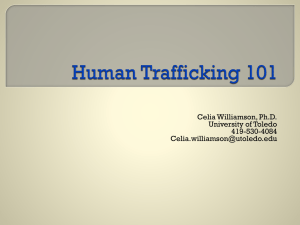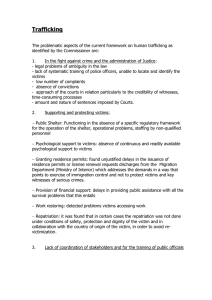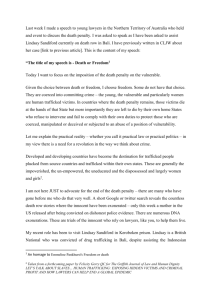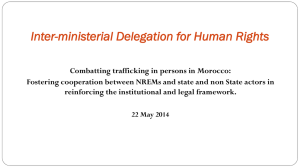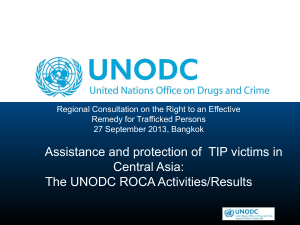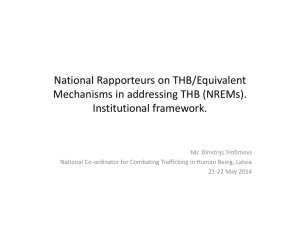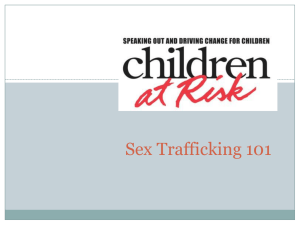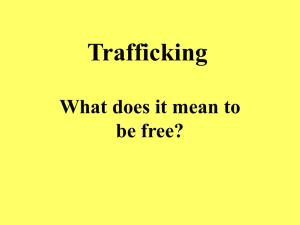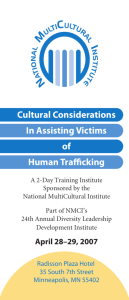Data Collection
advertisement
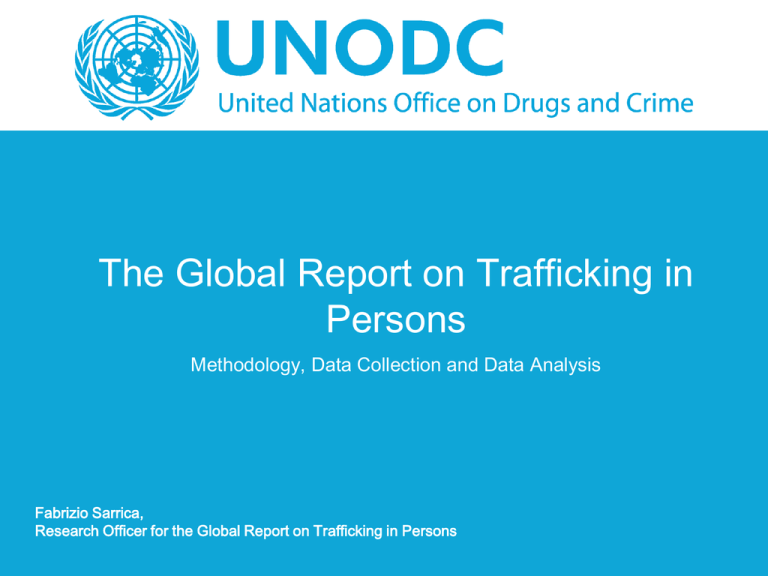
The Global Report on Trafficking in Persons Methodology, Data Collection and Data Analysis Fabrizio Sarrica, Research Officer for the Global Report on Trafficking in Persons Mandate In July 2010, the GA mandates UNODC to publish a Global Report on Trafficking in Persons every two years “… the UNODC to collect information and report biennially …on patterns and flows of trafficking in persons at the national, regional and international levels….” (Para 60, A/RES/64/293 – United Nations Global Plan of Action against Trafficking in Persons) Existing Needs • When looking at status of Research on Trafficking in Persons, – need for more analysis based on objective facts – need for more transparency concerning the sources used • The principle of the Global Report is ‘solid data from clear sources’ • Follow the best examples on monitoring and reporting about trafficking in persons (Dutch National Rapporteur, BundesKriminalAmt, etc) Methodology • Analytical interpretation of a large sample of detected cases of Trafficking in Persons; – On the base of cases detected by national authorities… – …and taking into considerations the limits/biases of this data in representing the TIP reality… – …analysts interpret the data in order to grasp patterns and flows of trafficking in persons. • Some forms of trafficking are more easily detected than others • In some countries CJ Stats are not credible. • Detecting more or less depends on legislation and capacity. Data Collection Data Collection • Need for a large coverage + use of best sources of data in each country. • Thus, questionnaire be short and simple – just core indicators; – – – – – Gender of prosecuted/convicted for TIP, Gender and Age of TIP victims detected or assisted, Forms of exploitation recorded, Citizenship of the victims detected or assisted, Countries from where victims were repatriated • Questionnaire be somehow flexible • Questionnaire allows transparency – Always indicate the source of the data provided and space to clarify what is the data (i.e. the art. of CC) • Have local focal point/expert facilitating the data collection + provide insight on what’s behind the data Data Collection • Information is not taken at its face value; • The data collection is not over with the collection of data; • It continues with the collection of the metadata –what is behind the data collected – – – – What article of the criminal code is used to prosecute trafficking cases? Is the legislation partial? Are there other crimes, offenders or victims included in these numbers? How reliable are the authorities providing this data? • Opinion of local experts, qualitative studies and triangulation with other sources is needed to interpret the data and assess potential biases. Data Collection Japanese Chinese •Chinese legislation is different. Chinese data cannot be used in an aggregation as it would result in a bias. Data Collection • The metadata is used to understand how this data can be used; – Chinese data to a limited extent describe the situation in that country, – Cannot be mixed with the Japanese data because this would result into a biased representation of the profile of the victims in the East Asian region. Data Entry and Data Validation • Data has been filtered on the base of the analysis of the metadata. • Data should be re-checked by the national authorities and national experts; – Is this information correct? – Provide comments and more recent data • Final clean database containing statistics on detected cases of trafficking + information on the metadata, qualitative studies, opinion of experts etc. Data Analysis Data Analysis • 2 analytical dimensions – Patterns • Age and gender of the victims, • gender of the offender, • forms of exploitation. – Flows • Where to are victims trafficked? • From where are victims trafficked? • 3 geographical perspectives – Country Level – Regional Level – Global Level Data Analysis – country level • Data is collected at country level, so information can be easily displayed in the country profile; Data Analysis - regional and global levels • Patterns aggregation at higher geographical level; – Good for synthesis, – Loss of details, hiding local differences and could be meaningless, – It is possible to mediate this by using national data into a regional context Data Analysis – the difficulties in grasping flows • The origins of TIP (where are victims trafficked from?) can be easily recorded, by analyzing the citizenship of the victims detected at destination. • The destinations of TIP (where are victims trafficked to?) is more difficult. It is needed always to refer to the citizenship of the victims detected at destination. Data Analysis – the importance of trends Continuing the monitoring • UNODC is constantly collecting data, updating information and tracking patterns, flows and trends. • New round of official data gathering is starting in May 2013 (next CCPCJ). • The next edition of the Global Report will be published in December 2014, will focus on the role of organized crime and corruption. THANK YOU FOR YOUR ATTENTION For more information: http://www.unodc.org/



